Search Results for Tag: UN talks
The Arctic on the UN agenda
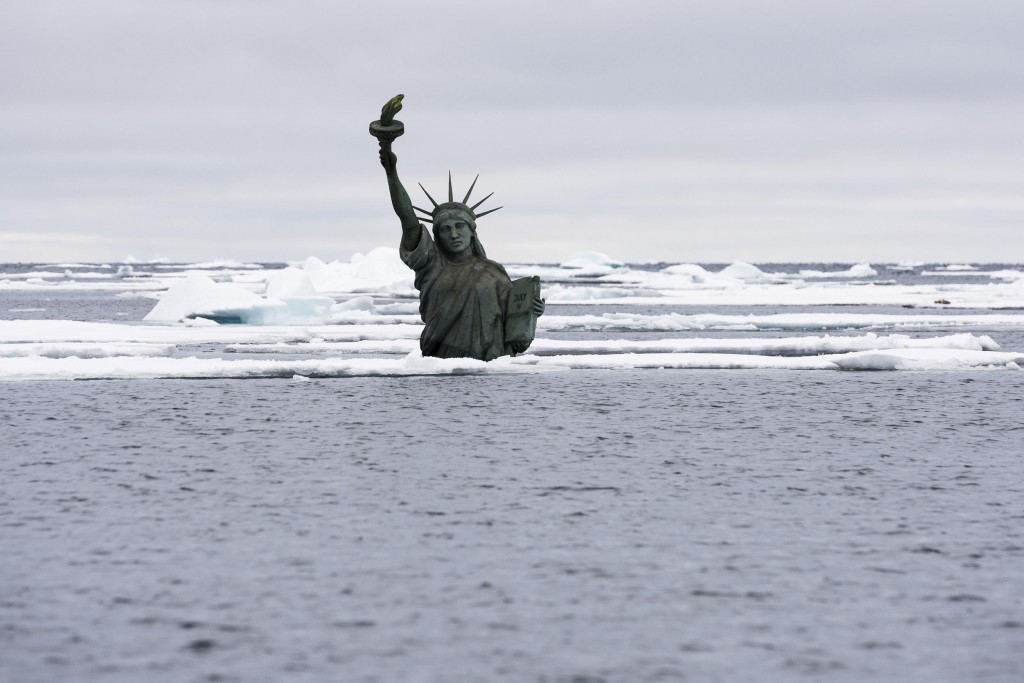
US icon sinking in melting ice? The photo was taken in the Arctic Ocean northwest of Svalbard the 7th of September 2014.
(Christian Auslund / Greenpeace)
To those of us who deal with the Arctic on a regular basis, the significance of the melting ice for the UN climate negotiations and vice versa is abundantly clear. But not everybody understands all the connections. A major media event like this week’s New York climate summit hosted by the UN Secretary General Ban Ki Moon in person was a fine chance to focus attention on the need to protect the Arctic. Greenpeace made good use of it, handing over a petition with six million signatures just ahead of the big event, and with hundreds of thousands gathered in New York for the Climate March.
It was timely in more ways than one, just as the latest sea ice figures were published to confirm the melting trend.
The petition calls for long-term protection of the Arctic, with the region warming more than twice as fast as the global average and opening the high north to shipping and commercial exploitation. Greenpeace and other groups are calling for a ban on oil exploration, which could endanger the fragile ecosystem. Experts also have safety concerns about increased shipping.
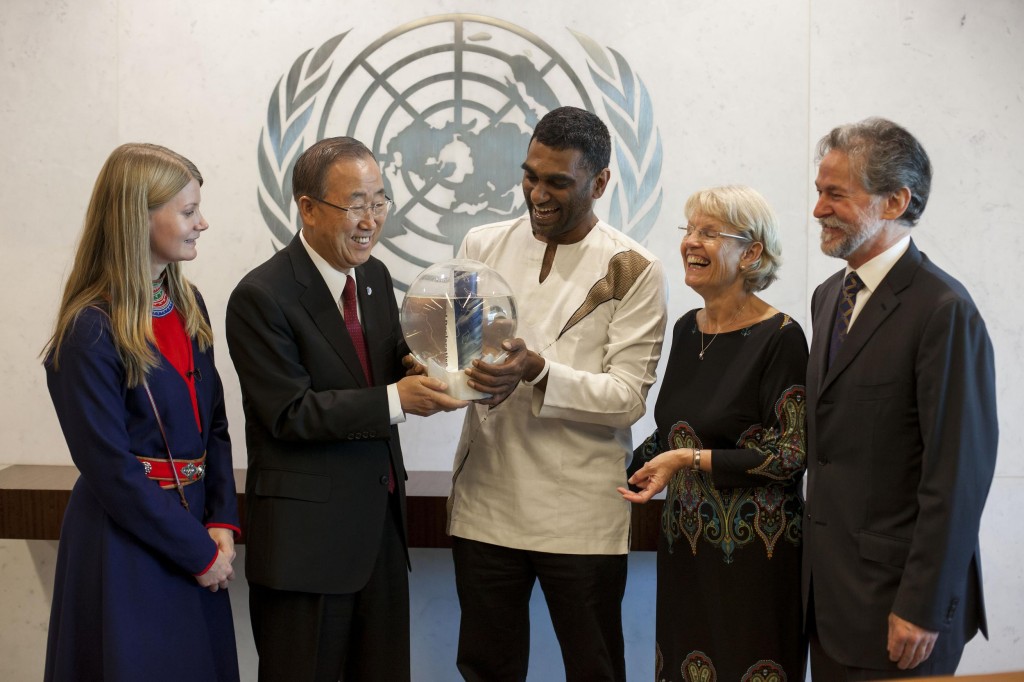
Ban Ki-moon receives the Greenpeace delegation with the petition. The delegation consists of Indigenous rights activist, youth leader and Saami politician Josefina Skerk, Margareta Malmgren-Koller, Greenpeace Senior Political Advisor Neil Hamilton and Greenpeace International Executive Director Kumi Naidoo. Photo: Michael Nagle / Greenpeace
Commercial development versus environment
Earlier this month, a survey showed that 74% of people in 30 countries support the creation of a protected Arctic Sanctuary in the international waters surrounding the North Pole. The study was commissioned by Greenpeace and carried out by Canadian company, RIWI. Around the same time, the Arctic Council, which combines the Arctic states and indigenous peoples’ representatives, currently chaired by Canada, supported the founding of a new business grouping, the Arctic Economic Council. Its aim is to promote the commercial development of the Arctic region. I wrote about this here on the Ice Blog and on the DW website.
Global responsibility for the Arctic
The UN Secretary General accepted the Greenpeace petition saying:
“I receive this as a common commitment toward our common future, protecting our environment, not only in the Arctic, but all over the world.”
Ban Ki-moon said he would consider convening an international summit to discuss the issue of Arctic protection. He also expressed a desire to travel aboard one of the organisation’s campaigning ships in the Arctic in the near future.
Greenpeace Executive Director Kumi Naidoo, who was part of the delegation, said: “The Arctic represents a defining test for those attending the summit in New York”.
He said leaders should bear in mind that concern for the rapid warming of the world was not consistent with planning oil and gas development in the melting Arctic.
The small delegation that met Ban Ki Moon included Indigenous rights activist and Saami politician Josefina Skerk, who last year trekked to the North Pole to declare the top of the world ‘the common heritage of everyone on earth’.
Skerk, a member of the Saami Parliament, said: “We, who want to continue living in the North, are gravely concerned about climate change and the destructive industries that are closing in. My people know and understand the Arctic, and it is changing in a manner, which threatens not just our survival, but the survival of people all over the world.”
Skerk said humans had created the crisis and had to take action to solve it.
“I urge the Arctic countries in particular to take a giant step up and I think the world needs to pay much closer attention to ensure that it happens. They might as well start here in New York.”
From Kiribati to Svalbard and New York
Melting ice especially from the Arctic Greenland ice sheet is raising sea levels around the globe, endangering low-lying areas. At the weekend, the President of Kiribati, Anote Tong, ended a Greenpeace-organized tour of glaciers in Norway’s Svalbard Archipelago. He said the trip to the Arctic ice had made a deep impression on him, which he would share with world leaders at the U.N. climate summit:
“It’s a very fascinating sight. In spite of that, what I feel very deeply is the sense of threat,” Tong said. “If all of that ice would disappear, it would end up eroding our shores.”
Kiribati is a group of 33 coral atolls located about halfway between Hawaii and Australia. Many of its atolls rise just a few feet above sea level.
In last year’s report by the Intergovernmental Panel on Climate Change (IPCC), experts concluded oceans could rise by as much as 1 meter (3.3 feet) by the end of this century if no action is taken to cut the greenhouse gas emissions causing global warming.
“It won’t take a lot of sea level rise to affect our islands,” Tong said. “We are already having problems.”
Sea ice minimum confirms melting trend
The New York summit coincides with the annual announcement of the minimum sea ice for the year, as the summer season comes to an end. The sea ice – in contrast to glaciers on land – does not influence global sea level, but is regarded as a key indicator of how climate change is affecting the region. This year the figure announced by the US National Snow and Ice Data Centre (NSIDC) was 5.01 million square kilometers. The figure is the sixth lowest extent since records began.
The minimum ever recorded at the North Pole was 3.29m sq km in 2012 – and the eight lowest years have been the last eight years.
Ice levels in the Arctic have recovered from their all-time low, but are still on a shrinking trend, said Julienne Stroeve of the National Snow and Ice Data Centre. ”We have been telling this story for a long time, and we are still telling it,” she said.
NSIDC records showed that, this year, ice momentarily dipped below 5million sq km to 4.98m on 16 September, but the official figure is taken from a five day average.
Satellite data shows that one part of the Laptev Sea was completely clear from sea ice for the first time this summer. One of the most important questions for climate scientists is how soon the Arctic will experience its first sea ice-free summer.
Rod Downie, head of WWF UK’s polar programme, said that this year’s new Arctic minimum should prompt new action from the leaders meeting in New York. He stressed the connection between the Arctic and weather conditions in other parts of the world:
“As David Cameron prepares to meet other global leaders at the UN climate change summit in New York, the increased frequency of extreme weather that is predicted for the UK as a result of a warming Arctic should serve as a reminder that we need urgent action now to tackle climate change,” he said.
The summit was a major PR event to draw attention to the need for urgent and substantial climate action. The accompanying protests around the globe show people are not happy with the slow pace of the climate talks and their governments’ efforts to reduce emissions. Of course there was little in the way of concrete pledges. Still, on the whole, I see it as a successful step on the way to a new climate agreement because it has put the spotlight on climate change at a time where international conflicts are dominating the news agenda.
More commentary on the summit from me here:
World leaders must act as climate takes centre stage
All-star gala puts climate back on the agenda
UN Climate Chief on New York summit
Your Ice Blogger has been busy with the New York climate summit around the corner. I was delighted to read that Ban Ki Moon is considering a special Arctic summit and a trip on a Greenpeace Arctic mission vessel after receiving a petition to Save the Arctic. I am also hoping there will be some high-profile promises of climate action.
Meanwhile, here in Bonn, I talked to Christiana Figueres, the Executive Secretary of the UNFCCC (Climate Secretariat), which is based here in Bonn, just next door to my Deutsche Welle Office, before she left for New York.
She told me what she expects of this meeting, which is something different from the regular UN climate summits. She also told me why she was joining yesterday’s climate march.
Let me share some excerpts from the interview in writing here with you, and offer you a full length audio version of my talk to this very influential and passionate lady.
More on the climate summit and the Arctic here soon.
Excerpts from my interview with Christiana Figueres:
Ice Blogger: Why do we need yet another climate summit?
The conferences we organize once a year have the purpose of moving towards a legally based agreement, scheduled to be adopted in Paris next year. In New York, nothing is going to be negotiated. It’s very much an attempt to blow wind into the sails of the formal process. It’s about raising political will and public awareness. It is a powerful opportunity for the leaders of countries and corporations to come forward and say what each of them is going to do.
UN Secretary-General Ban Ki-moon has asked these leaders to bring bold announcements and actions to the summit. What do you expect to come out of it?
We will have a host of announcements from governments about what they are already doing and will undertake with respect to bringing down their own emissions and increasing the resilience that they need to incorporate into their planning and their infrastructure to deal with the variability and the vulnerability of climate change. From the private sector we expect the same: announcements as to how they are going to contribute to reduce emissions, either in their own operations or, even more interestingly, how they are going to be shifting their capital into low-carbon services and products to accelerate the global shift towards a low-carbon economy.
Are you expecting major announcements by the host country USA or a key player such as China?
Yes, we are expecting all countries to come forward and begin to put on the table what they will be able to contribute next year into a much more formal setting. But for that, the deadline is not until March 2015. What we expect is indications of what is possible. The fact is that most countries around the world are currently doing their homework and figuring out at a national scale what is financially, politically, economically and technically possible for them to do.
The summit is taking place in the USA, a key player in terms of emissions and a possible new climate agreement. Can hosting the summit there make a difference to US attitudes and policy?
The second term of President Obama has seen an accelerated and up-scaled engagement on climate change. The latest move of the Obama administration to ask the EPA (US Environmental Protection Agency) to come forward with regulations on power plants is probably the most ambitious action the US government has taken on climate change. We expect President Obama will be giving indications of how the United States is going to further build on those efforts. It is also very interesting that on US land, there will be the people’s climate march, just two days before the summit. That will show that there is, even in the United States, broad and deep public support for global climate policy making.
Do you think this kind of grassroots movement is what we need to take things forward?
I think it’s a very important component. I’m very grateful to the organizers of the march and to everyone who’s going to be at the march. I will be there, because it’s important to give a very strong message that it is not just the responsibility of governments or corporations, but rather there is also civil society responsibility here to make their awareness and concern felt, and encourage countries and companies to move towards low-carbon economies as soon as possible.
Some people say cities and regions should play a bigger role while governments struggle to negotiate a climate agreement?
Well it’s not an either or. Cities all around the world have already taken a very impressive lead. And we will hear from them. The mayors of hundreds of cities will be in New York, and the same goes for regions, whether it’s groups of countries or groups of municipalities. The optimization of climate action is going to come from the coherent integration of policy from the international level to the national to the local level.
Isn’t it difficult to arouse interest in an additional climate summit in the current world political situation with attention focused on conflicts in the Middle East, Ukraine and other places?
The whole week in New York will see much press attention to the summit. Not only because we will have hundreds of thousands of people on the street, not only because we will have hundreds of political leaders there, hundreds of corporations, but because they are all coming to New York for one very powerful reason. That is, climate change is now the biggest challenge that humanity has faced, certainly in this century. And there is growing awareness of this. There is already a lot of conflict around the world, around water scarcity, around migration, around food and security, and that is exacerbated by climate change. So if we want to prevent conflicts that will scale out of control, then we have to address climate change in a timely fashion.
The latest figures show greenhouse gas emissions are still rising. Scientists say the two degree target is virtually out of reach. What has to happen to bring about the kind of action we need to avert disastrous climate change?
Science has made it very clear: there is only one pathway that will allow us to stay under the maximum two degree maximum temperature increase which is the maximum temperature increase we could allow, and still maintain a more or less predictable climate for all populations around the world. So this summit and the formal processes which will occur in Peru at the end of this year and in France at the end of next year are three very important clarion calls to world leaders both public and private that time is running out. We still have the time to do it, but in order to avert the worst effects of climate change, we have to come to a global agreement by next year.
World Cup Champs for Arctic Climate?
Chancellor Merkel is on her way from the World Cup Final in Brazil to Berlin, where she will address the Petersberg Climate Dialogue. This is an informal but influential meeting of 35 international ministers, co-chaired by Peru, the host of the next world climate conference this December. UNFCCC chief Figueres is also in attendance, hoping progress will be made towards a successful Peru conference and a new world climate agreement to be signed in Paris in 2015. Yes, it is a kind of conference to prepare the conference to prepare the conference…. but every little step helps. As I wrote here and on the DW website during the last round of preparatory talks in Bonn, things are looking more positive than they once did, with the big players USA and China finally coming into the game. Here’s hoping Frau Merkel can bring some of the energy and enthusiasm from the World Cup into the “Petersberg Dialogue” (initiated on the Petersberg here in Bonn, but since moved to Berlin) and the climate process. I interviewed Martin Kaiser, the climate policy chief at Greenpeace about the current state of play. You can read the interview here. But I also talked to him about that key ice blog issue, the relevance of all this to the Arctic.
Here is his response, if you would like to listen: For those who prefer a read, this is what Martin Kaiser had to say about the UN climate process and the Arctic:
“If we want to limit the ice melt in the Arctic, we have to address the issue of climate change. If we don’t manage to get countries like China and the US, to drastically reduce emissions from burning coal and oil, the ice melt is unstoppable. The Arctic is one of the places in the world where you can see the drastic changes caused by global warming in a most visible way. We expect a historic minimum ice melt this September, and this will give a clear warning when heads of state are going to meet in New York at around the same time.
It’s quite contradictory that oil companies are going to the Arctic to drill for more fossil energy which will fuel global warming even more. This needs to stop. That’s why Greenpeace is calling for a sanctuary in the Arctic which prohibits commercial exploitation of the region.
(Ice Blogger: How does that look in the countries with Arctic regions?)
If we look at Canada – It has one of the most regressive climate policies in place, Prime minister Harper is one of the worst climate deniers, and Canada is investing a lot into tar sands in the west of the country – a business model that is not sustainable. Russia’s business model is based on the export of oil and gas, so it is problematic to talk to Russia about the protection of the Arctic at the moment. Greenpeace has had experience of how they prioritize this business model over preserving the rare ecosystem. There are more countries like China and India coming in to the Arctic, and wanting to get a share of the resources extraction, and that is a worrying sign. Instead of protecting the Arctic, it’s opening like the Wild North for the big corporates investing into oil and gas. That means we have to have a political process which clearly determines a sanctuary in the Arctic and limits commercial exploitation of it.
Finland has been quite progressive so far to move forward the idea of a sanctuary in the Arctic. We hope that rich countries like Norway or also Iceland will join that group. But that’s a long way to go.”
Climate talks at glacial place?
Who would have believed it? It has been a long time since the routine UN climate talks in Bonn aroused much in the way of enthusiasm. Frustration or even despair were more likely the order of the day.
Since the debacle in Copenhagen in 2009, it has been hard to stir up any kind of optimism in the climate debate. The planet is heating up, CO2 emissions are still on the increase, the ice caps are melting, storms, floods and droughts are causing huge problems even for wealthy, industrialized nations.
At the same time the UN negotiations have been slithering along at glacial pace. One upon a time, that meant very slow. But with increasing warming, even the ice giants are on the move. The sea level is rising – and maybe even the UN climate talks are sliding into motion.
A glimmer of hope from the climate sinners?
In recent years, the UN summer meetings on the banks of the Rhine were at best good to fill a hole on a news-slack day. This time, it was different. Just before the talks started, US President Barack Obama got the “snowball” rolling with his announcement he would use the Environmental Protection Agency to impose tough restrictions on emissions from coal power plants.
It’s time for innovative solutions all round. Extreme weather at home has taught America to fear climate change. Obama wants climate action to be his legacy. That can only be a good thing for all of us.
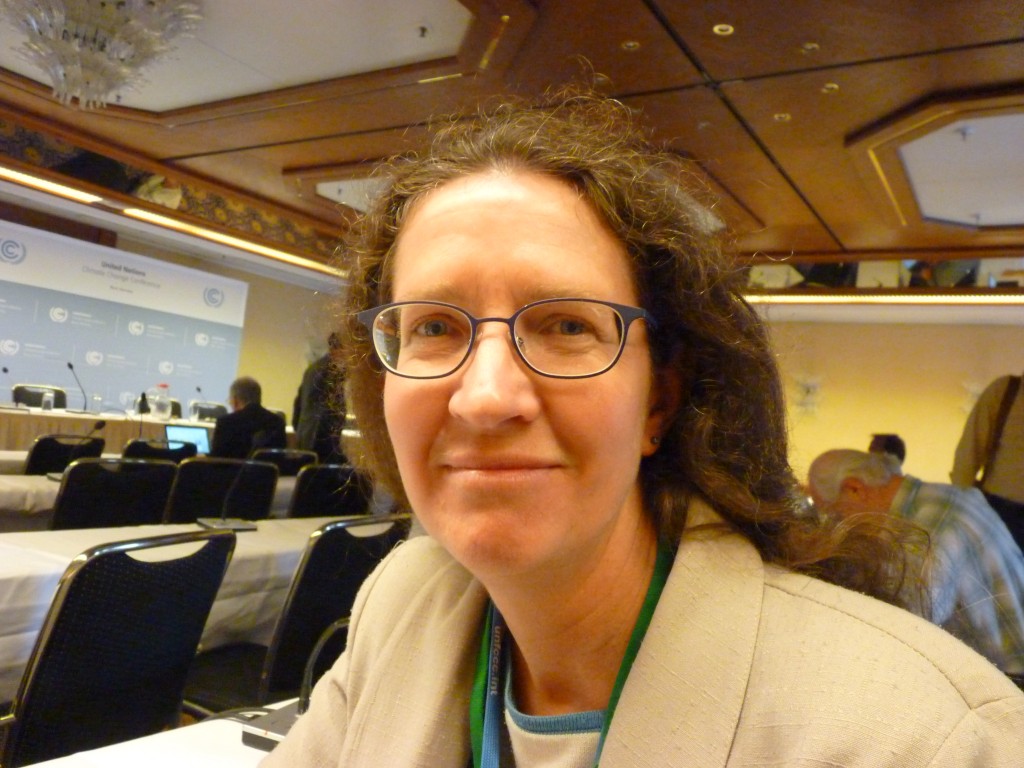
Pam Pearson, Director of the International Cryosphere Climate Initiative told me people in her home state Florida are more aware of the importance of the polar ice. (Pic: IQ)
When China then came out with the intention to cap its emissions, the world really had to sit up and take notice. Even the to-ing and fro-ing on how, why and when, or whether it was just the “personal opinion” of a high-ranking climate representative could not dampen the enthusiasm. For the first time ever, it looks as if the world’s two biggest emitters could actually be prepared to act.
Meanwhile more encouraging signs came out of India and Latin America.
Renewables on the ‘up’
At the start of the Bonn talks, a broad coalition of environment, human rights, indigenous and women’s groups demonstrated outside the conference venue for a worldwide switch to renewable energies. By the end of the talks, 60 countries had signaled support for a 100 percent switch by 2050. German Environment Minister Barbara Hendricks had to admit Germany was not making its targets right now, but would introduce new measures to reach its ambitious goal of a 40 percent emissions reduction by 2020.
If the EU could also bring itself to increase its targets and regain its old position as a climate leader, if the energy crisis caused by the Ukraine dispute could convince politicians that renewable energy is the key to energy security and independence, Europe could well be on its way to hosting a conference that will give birth to a new global agreement.
And even if the UN structures cannot move fast enough: renewable energies are on the rise. UNEP figures show more investment in renewables in the last year than in oil, coal and gas together. Even outside the UN context governments, companies and consumers are finding reason enough to reduce fossil fuel consumption. All is not yet lost for the melting icecaps. The climate snowball is gathering speed.
Polar Ice at UN Bonn Climate Talks

… And the ice continues to melt. (Pic: I. Quaile)
The delegates to the UN climate meeting currently taking place here in Bonn are receiving an urgent appeal from polar scientists to cut emissions to slow polar ice melt and give low-lying coastal regions more time to adapt to rising sea levels.
I was very interested to hear about a side-event being held here this evening, at which the authors of this year’s key studies on developments in the Antarctic will be explaining the connections between melting polar ice and climate change impacts like rising seas, affecting regions as diverse as small island states, Bangladesh or Florida in the USA.
I interviewed Anders Levermann from PIK, the Potsdam Institute for Climate Impacts Research and Pam Pearson, Director of ICCI, the International Cryosphere Climate Initiative, both in Bonn for the event.
The ICCI decided to bring the cryosphere into the Bonn talks to sensitize delegates to the dramatic developments in the Antarctic in particular, says Pearson. Ice Blog readers (and I was so delighted to hear Pam herself is one!) will remember posts earlier this year on melting in the East and West Antarctic. I also covered these in articles for DW. The shocking thing is that the Antarctic, even East Antarctica, which was until relatively recently considered so cold it had to be safe from global warming, is already being affected by climate change. The papers on the West Antarctic even described the melt trend as “irreversible”.
“We have entered an era of irreversible climate change”.
Today, Anders Levermann, author of the East Antarctic paper and one of the world’s leading Antarctic researchers, told me “we have entered a new era of climate change, witnessed the tipping of the West Antarctic ice sheet, and this is irreversible”.
That should really shock people into action, you would think. But climate negotiations are moving, as one of the experts said to me at the meeting “at a glacial pace”. As we can see in Antarctica, though, and Greenland and other regions, those glaciers are speeding up. Maybe there is hope for the climate talks yet!
The announcements by the USA and China on possible emissions cuts have brought a new “buzz” to the Bonn conference. The fact that the key emitters could finally be getting the message and preparing to move, with the impacts of climate change hitting their own countries, has to be a positive signal. Pearson confirmed to me that people in the sunshine state of Florida, where she lives, had become more aware of the importance of melting ice caps with increasing floods and storms.
As Levermann says, Antarctica and Greenland have a huge potential to raise sea level further than previously anticipated. He was lead author on the IPCC report chapter on sea level rise. The latest IPCC report factored in some of the likely impacts from melting ice in these regions for the first time. Of course the latest research was not yet included. For the 21st century forecast, this will not make a lot of difference, says Levermann. But the fact that this irreversible Antarctic melt is now underway will make a big difference to coming generations.
There are those who dispute whether the warming of the ocean, which is causing the Antarctic melt (unlike the surface melt on Greenland) is man-made. Levermann does not rule out natural variation as a possible influence. But ultimately, he says, that is irrelevant. Greenhouse gas emissions and so human interference are warming the planet, and any further warming, whatever the cause, will speed up ice melt. So cutting emissions is the way to slow it down and, Pearson adds, gives people time to adapt to rising seas.
The combination of models based on the principles of physics, using a higher resolution than ever before, and evidence from ice cores showing what happened in the past, make for a high degree of certainty about these ice developments, says Levermann.
“The level of warming will determine the rate with which we discharge West Antarctica, and we can still prevent the tipping of East Antarctica”, the cryosphere experts told us here in Bonn.
That is a huge responsibility. Here’s hoping the message will make it into the hearts and minds of those negotiating the future of the earth’s climate and the governments they represent.



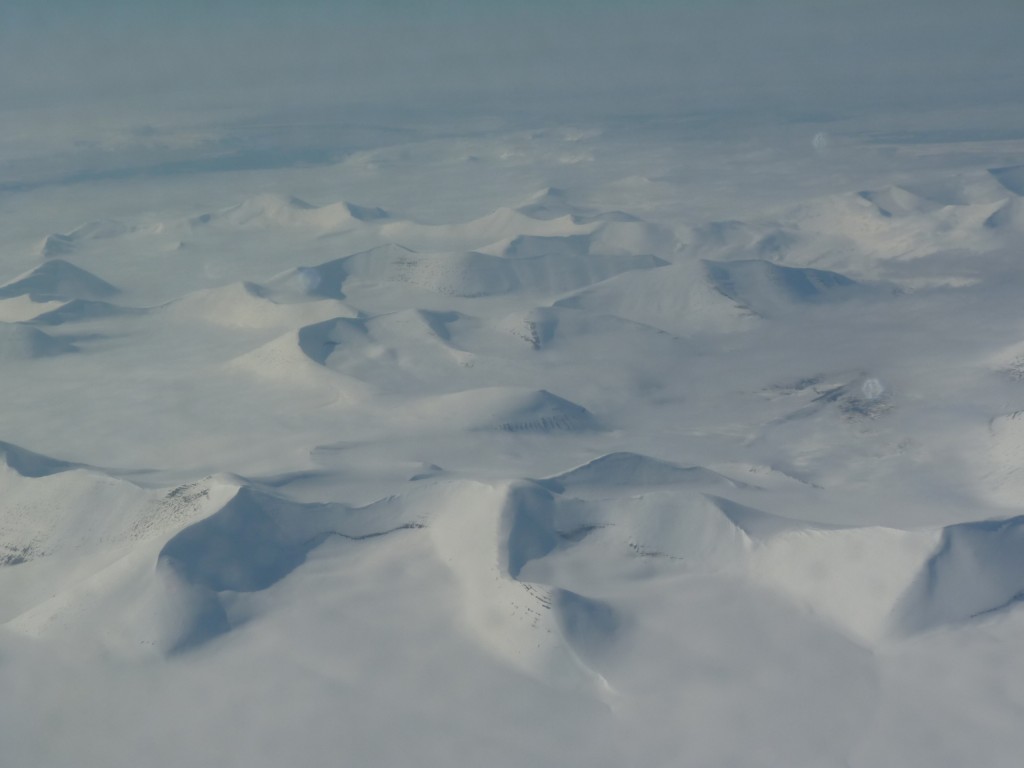

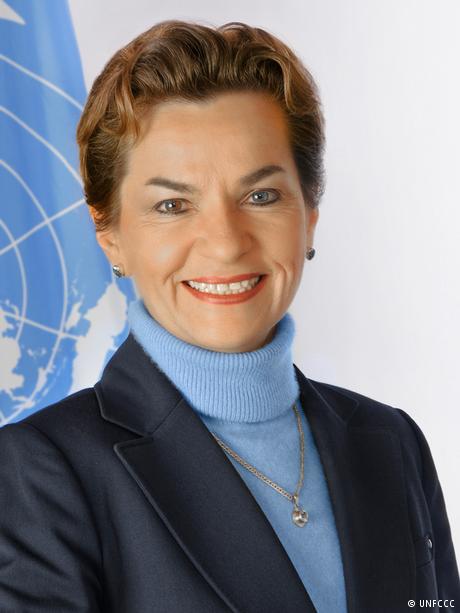


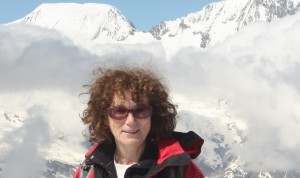
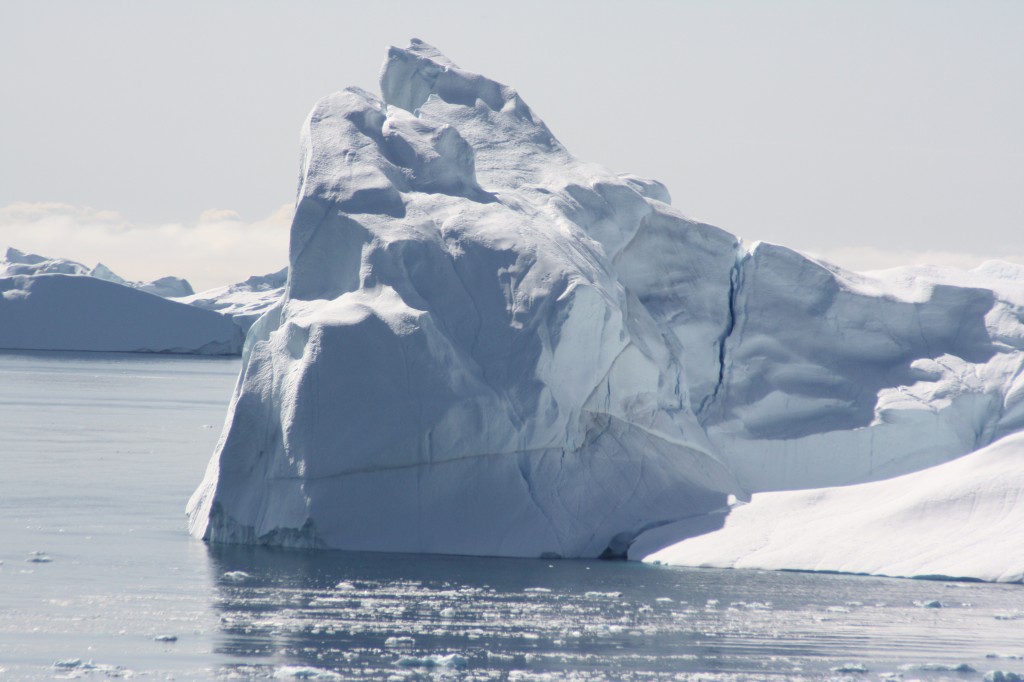
















Feedback